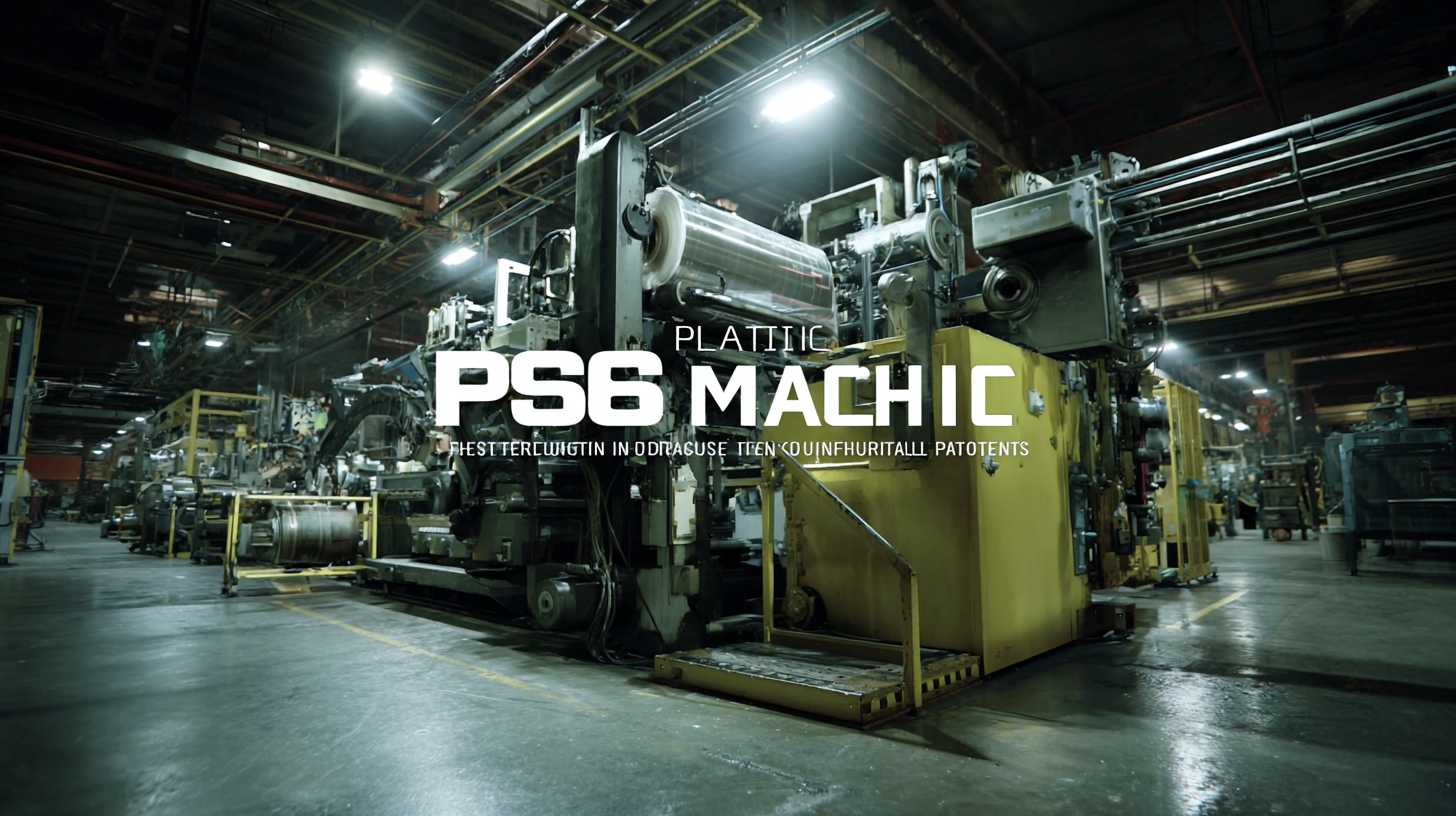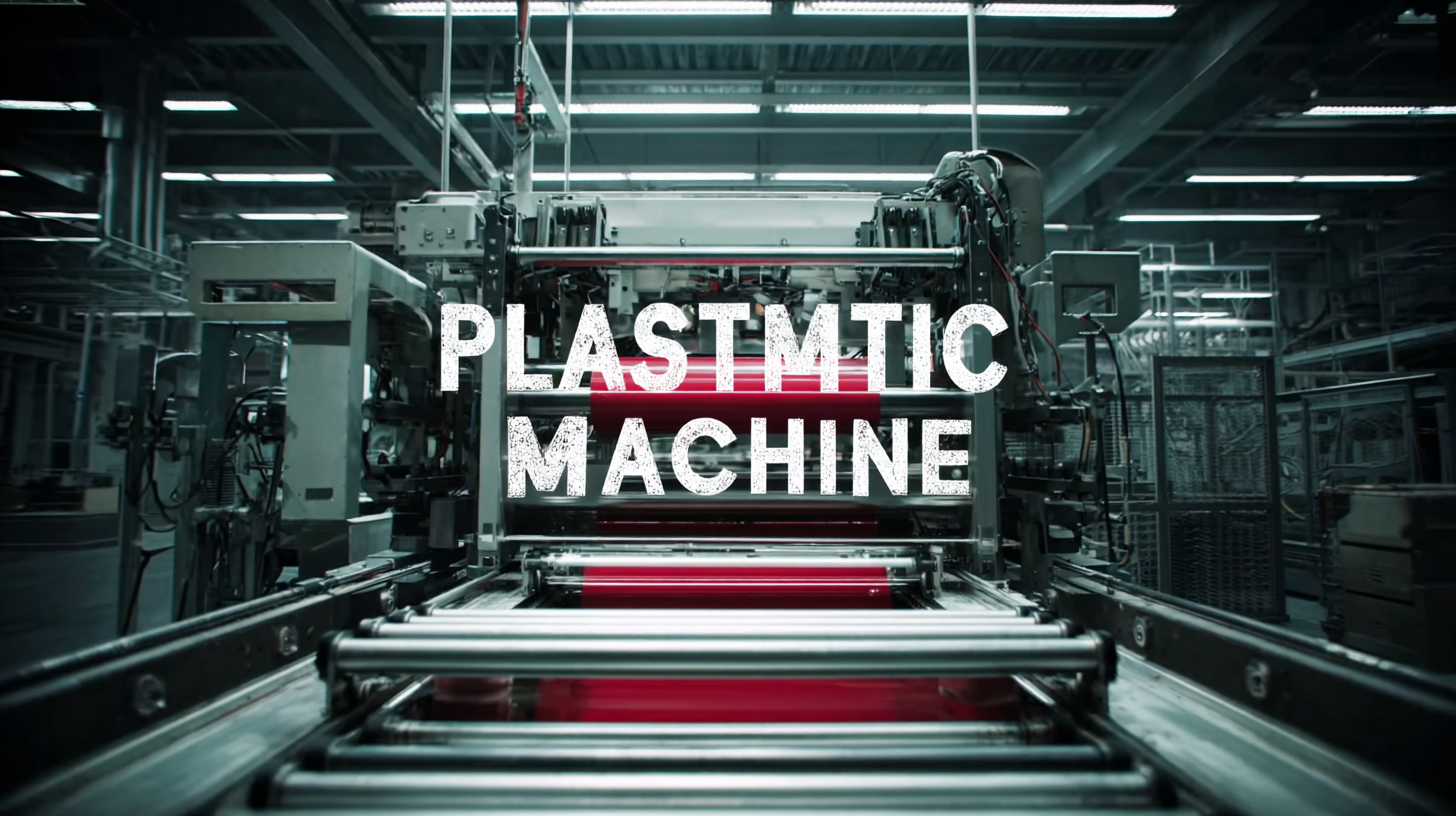Transforming Industries with Best Plastic Material Machine Practical Applications and How to Implement Them
In today's rapidly evolving industrial landscape, the role of the Plastic Material Machine has become increasingly critical. According to a recent report by Allied Market Research, the global plastic processing machines market is projected to reach $45.4 billion by 2025, growing at a compound annual growth rate (CAGR) of 6.2% from 2018 to 2025. This growth underscores the significance of integrating advanced plastic material machines into various industries, including automotive, packaging, and consumer goods. By enhancing efficiency, reducing waste, and enabling greater design flexibility, these machines are transforming how manufacturers operate.

This blog will delve into practical applications of plastic material machines across industries, highlighting real-world case studies that demonstrate their impact and offering insights on how to effectively implement these technologies to drive innovation and sustainability in manufacturing processes.
Comparative Analysis of Plastic Material Machines for Industry Transformation
As industries strive for sustainability, the importance of comparing different plastic material machines becomes paramount in transforming production processes. The European Union’s investigation into plastic circularity in the automotive sector highlights significant drivers and barriers to recycling efforts. With over 400 million metric tons of plastic waste generated globally each year, adopting advanced technologies for recycling is crucial. Closed-loop recycling technologies have emerged as viable solutions, allowing for the reduction of environmental impacts while promoting resource efficiency within the industry.
Furthermore, the analysis of bioplastics versus synthetic plastics reveals opportunities for replacing conventional materials like polyester and nylon, which dominate the textile industry (accounting for approximately 70% of synthetic materials used). By implementing machines that facilitate the production of bioplastics, industries can pivot towards more sustainable practices while enhancing their circular economy initiatives. Such shifts not only address waste management issues but also align manufacturing processes with the growing demand for environmentally friendly products, ultimately reshaping market dynamics in favor of sustainability.

Evaluating Performance Metrics: Key Factors in Machine Selection
When selecting a plastic material machine for industry transformation, evaluating performance metrics is crucial. The key factors to consider include processing speed, energy efficiency, and precision. Processing speed not only affects production timelines but also influences overall operational costs. Therefore, understanding the machine's throughput based on specific materials and product designs is essential when making a decision.
Energy efficiency plays a significant role in both cost reduction and sustainability. Machines that consume less energy while maintaining high performance can significantly lower operating expenses and contribute to a greener manufacturing process. Additionally, precision is paramount; machines that offer tight tolerances ensure high-quality outputs and reduce waste. By prioritizing these performance metrics, industries can optimize their production processes, selecting machines that best meet their operational goals and market demands.
Transforming Industries with Best Plastic Material Machine Practical Applications and How to Implement Them - Evaluating Performance Metrics: Key Factors in Machine Selection
| Application Area | Machine Type | Material Type | Production Rate (units/hour) | Energy Efficiency (kWh/unit) | Maintenance Frequency (times/month) |
|---|---|---|---|---|---|
| Packaging | Blow Molding Machine | Polyethylene | 1000 | 0.5 | 2 |
| Automotive Parts | Injection Molding Machine | Polypropylene | 800 | 0.3 | 1 |
| Consumer Products | Thermoforming Machine | PVC | 700 | 0.4 | 3 |
| Medical Devices | Extrusion Machine | ABS | 600 | 0.6 | 4 |
Real-World Applications: How Different Industries Utilize Plastic Machines
In today’s fast-paced manufacturing landscape, different industries leverage advanced plastic material machines to enhance efficiency and quality.
The automotive sector, for example, utilizes injection molding to produce complex components with high precision. These machines not only reduce waste but also enable faster production times, allowing companies to keep up with demand while maintaining high safety standards.
For those interested in implementing plastic machines into their operations, here are a few tips:
- First, assess your production needs carefully to choose the right type of machine that aligns with your output requirements.
- Secondly, consider investing in training for your staff; skillful operation can significantly impact overall productivity.
- Lastly, audit your supply chain to ensure that you have access to quality raw materials that match the capabilities of your new equipment, which is crucial for maintaining product integrity.
Industries like packaging and consumer goods also greatly benefit from innovations in plastic machinery. These machines can produce tailored products that meet evolving consumer demands, such as sustainable packaging solutions. By incorporating advanced technology and staying informed about industry trends, businesses can harness the full potential of plastic material machines, driving growth and efficiency across their operations.
Cost-Benefit Assessment: Is Investing in Modern Machines Worth It?
Investing in modern plastic material machines can be a pivotal decision for industries aiming to innovate and improve efficiency. A thorough cost-benefit assessment is essential to determine whether the initial financial outlay will yield significant returns. Factors such as increased productivity, reduced waste, and enhanced product quality should be weighed against the investment cost. For instance, advanced machines often come with automation features that can dramatically decrease labor costs while increasing output rates, making them a valuable asset in competitive markets.
Moreover, the longevity and reliability of modern machines play a critical role in their overall value proposition. While the upfront cost may be higher, the durability and lower maintenance needs of state-of-the-art equipment can lead to substantial savings over time. Additionally, companies that adopt the latest technology may find themselves better positioned to meet customer demands, stay ahead of competitors, and comply with evolving industry regulations. Therefore, evaluating the long-term benefits against the costs can help businesses make informed decisions that align with their strategic goals.
Future Trends: Innovations in Plastic Material Machinery and Their Impacts
 The plastic material machinery industry is at the forefront of transformation, with future trends suggesting significant innovations that will revolutionize production processes. With the projected growth in the planters and pots market reaching approximately $45.588 billion by 2024, and a surge in the cup-making machine market valued at nearly $11.719 billion by 2032, the demand for advanced plastic machinery is evident. These machines will not only enhance production efficiency but also contribute to sustainable practices within the industry.
The plastic material machinery industry is at the forefront of transformation, with future trends suggesting significant innovations that will revolutionize production processes. With the projected growth in the planters and pots market reaching approximately $45.588 billion by 2024, and a surge in the cup-making machine market valued at nearly $11.719 billion by 2032, the demand for advanced plastic machinery is evident. These machines will not only enhance production efficiency but also contribute to sustainable practices within the industry.
Tips for Implementing New Plastic Machinery: First, assess your current production capabilities to identify areas where new machinery can improve efficiency and reduce waste. Investing in state-of-the-art technology can lead to significant cost savings and environmental benefits. Moreover, consider workforce training to ensure that your team is equipped to operate new machinery effectively.
Additionally, stay informed about emerging trends and technologies in the plastic industry. Attend exhibitions like the upcoming 2024 China International Plastics and Rubber Industry Exhibition to network with industry leaders and gain insights into innovative solutions that can enhance your operations. Embracing these advancements will position your business for success in an evolving market.
